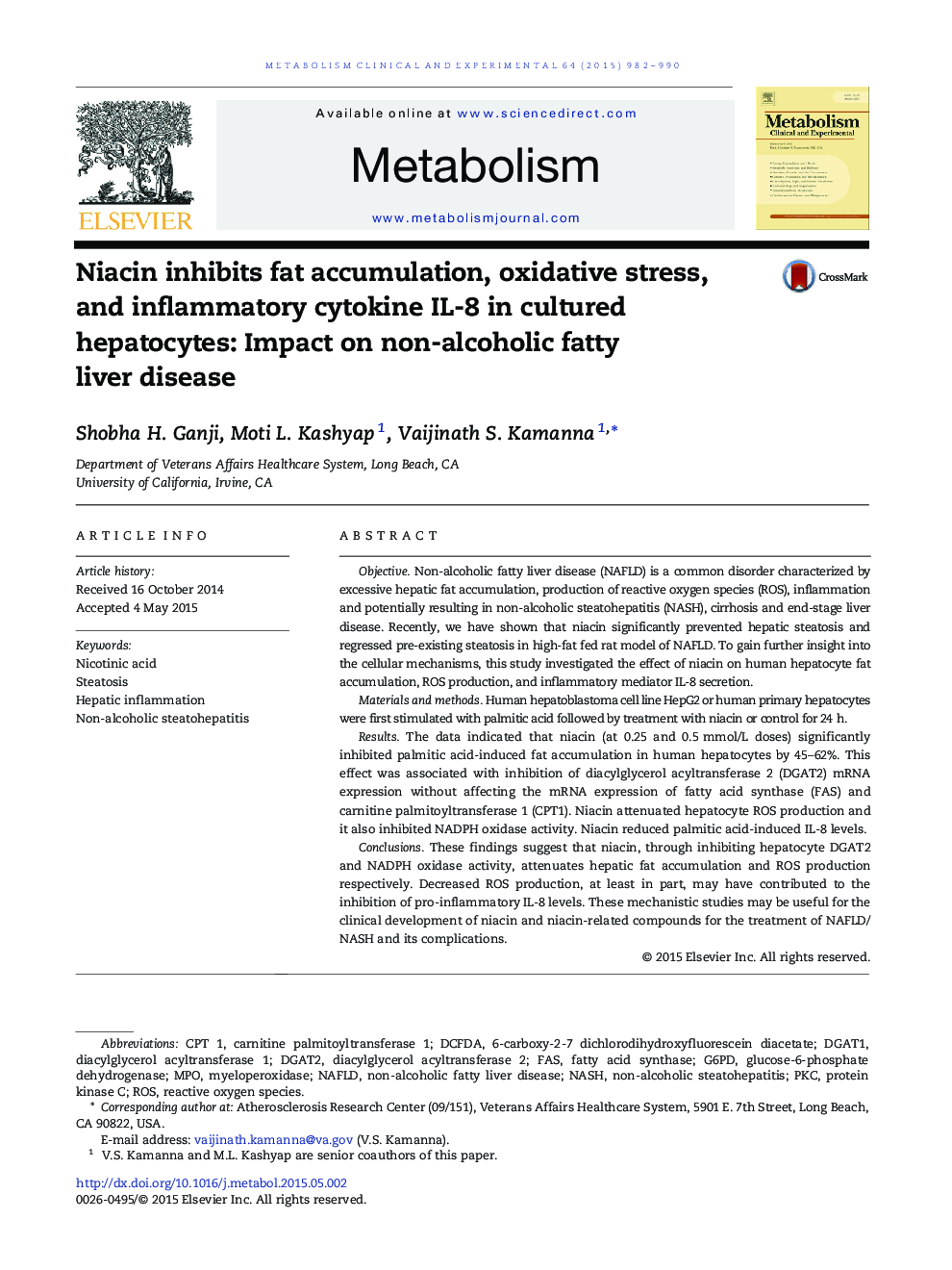| کد مقاله | کد نشریه | سال انتشار | مقاله انگلیسی | نسخه تمام متن |
|---|---|---|---|---|
| 5903212 | 1157059 | 2015 | 9 صفحه PDF | دانلود رایگان |

ObjectiveNon-alcoholic fatty liver disease (NAFLD) is a common disorder characterized by excessive hepatic fat accumulation, production of reactive oxygen species (ROS), inflammation and potentially resulting in non-alcoholic steatohepatitis (NASH), cirrhosis and end-stage liver disease. Recently, we have shown that niacin significantly prevented hepatic steatosis and regressed pre-existing steatosis in high-fat fed rat model of NAFLD. To gain further insight into the cellular mechanisms, this study investigated the effect of niacin on human hepatocyte fat accumulation, ROS production, and inflammatory mediator IL-8 secretion.Materials and methodsHuman hepatoblastoma cell line HepG2 or human primary hepatocytes were first stimulated with palmitic acid followed by treatment with niacin or control for 24Â h.ResultsThe data indicated that niacin (at 0.25 and 0.5Â mmol/L doses) significantly inhibited palmitic acid-induced fat accumulation in human hepatocytes by 45-62%. This effect was associated with inhibition of diacylglycerol acyltransferase 2 (DGAT2) mRNA expression without affecting the mRNA expression of fatty acid synthase (FAS) and carnitine palmitoyltransferase 1 (CPT1). Niacin attenuated hepatocyte ROS production and it also inhibited NADPH oxidase activity. Niacin reduced palmitic acid-induced IL-8 levels.ConclusionsThese findings suggest that niacin, through inhibiting hepatocyte DGAT2 and NADPH oxidase activity, attenuates hepatic fat accumulation and ROS production respectively. Decreased ROS production, at least in part, may have contributed to the inhibition of pro-inflammatory IL-8 levels. These mechanistic studies may be useful for the clinical development of niacin and niacin-related compounds for the treatment of NAFLD/NASH and its complications.
Journal: Metabolism - Volume 64, Issue 9, September 2015, Pages 982-990